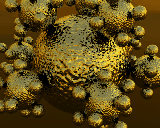 6.10. User Interface
6.10. User Interface  6.10. User Interface
6.10. User Interface The Raytrace user interface is menu based. The typical session involves running Raytrace interactively and redirecting your input to a log file. Then, changes are made to the log file which is then used as an input script.
Once Raytrace is running, there are various options available at the input prompt.
data
Some data can be typed in. Often, a default value for the
input is given in square brackets. If a blank line is
entered, the default value will be taken.
/* comment */
Any line beginning with '/*' is treated as a comment and
must be terminated on that line with '*/'. Generally,
comments are only used in script files to make them more
readable or to comment out certain input or pieces of data.
> log_file
All user input data is written out to the named log file.
To switch off the log, enter a line with just a greater than
character ('>'). This option is useful for creating script
files interactively.
< script_file
Input is taken from the script file. When the end of the
file is reached, the input stream pointer returns to the
original. Currently, it is possible to nest the input
redirection to a depth of 10.
! command
Input is taken from the executed command. You can even use
pipes if you want. The spawned off process can take input
from the terminal. This is only supported on UNIX systems.
Future enhancements are:
(1)
a Scene Description Language to describe environment,
data, properties and animation.
(2)
a wire frame rendering mode for fast placement of
objects.
(3)
model translators from common CAD/CAM formats.

Fig. 6.4 : Lumpy Spheres.












